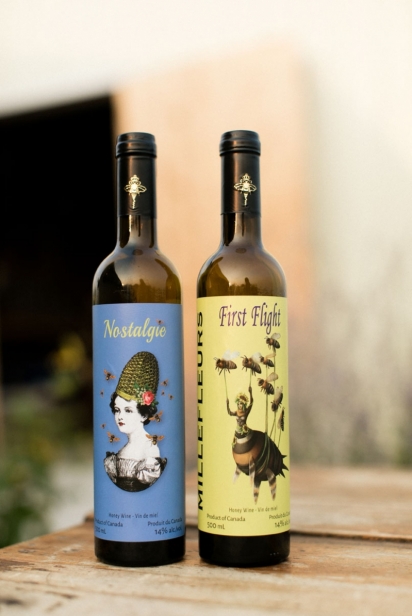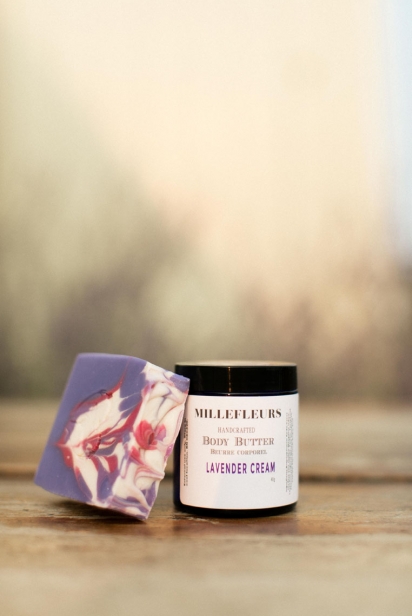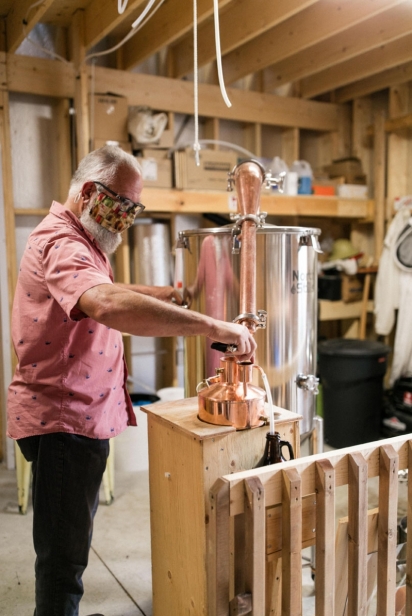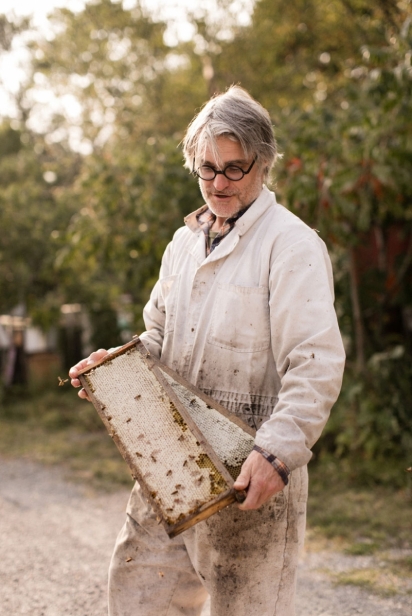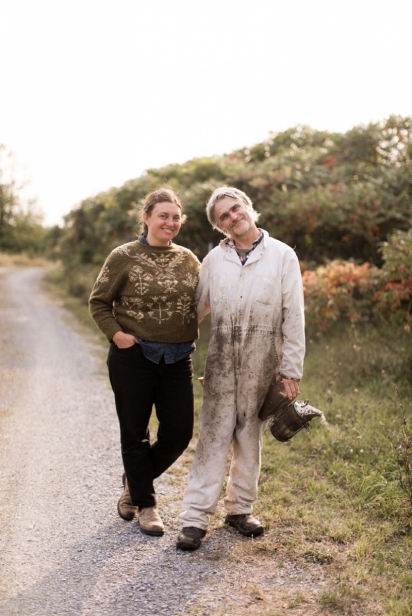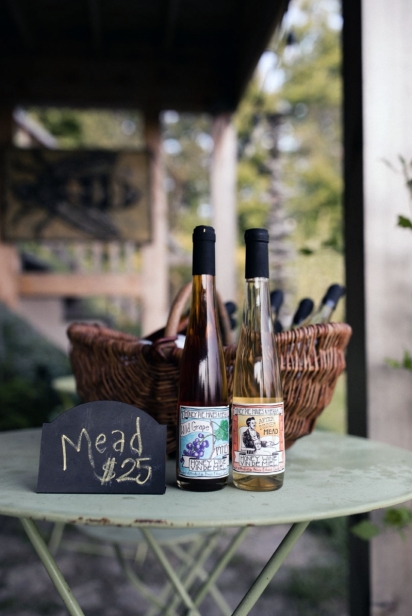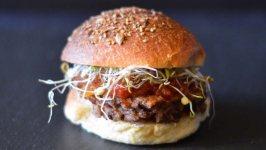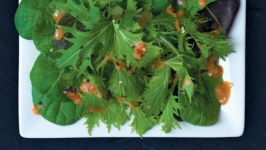An Amazing Bouquet
Prince Edward County is already the home of well-oiled weekend getaways. Purveyors of fruit and grain fermentations abound, so finding a magical, well-crafted beer, wine or cider isn’t a challenge in the bucolic setting. Within this mecca of crisp lagers, earthy Pinots and funky ciders, mead is still aiming to find footing.
The world’s oldest fermented beverage is gunning for a place at the table. It remains elusive and confounding: it’s in a complex and extensive world of its own — and it often sells out.
Depending on who you talk to, mead is or isn’t a honey wine. As it’s made from an apiary byproduct and not of fruit, technically, it isn’t a wine, though this depends on the meadmaker to whom you speak.
At its simplest, mead is two ingredients: honey and water. Honey alone is far too sugar-rich to ferment; watering it down releases the natural yeasts, trapped in their amber, to kick start fermentation. These yeasts are extremely site-specific and are a combination of yeasts suspended in the honey, their static lives tracing back to the hive, and formerly, flowers.
It isn’t farfetched to consider humanity’s oldest quaffable. Consider a honey-rich hive that was accidentally left outside before a rainstorm. Forgotten and left to the elements, it begins to bubble and foam, resulting in too-enticing nectar over time. Recreating it was easy — just add water.
Despite its two-ingredient nature, mead is far from simple. The flowers from which the bees feed and the time of year will significantly impact the fermentation’s final flavours. Honey flora and the microclimates surrounding hives are essential in retaining biodiversity in the fields and creating a complex honey character.
Being the oldest libation known to humankind, it finds its way regularly into Ethiopian dining experiences. T’ej is a variation on mead, which includes gesho, a plant not dissimilar to hops, to provide tannin and bitterness. The LCBO carries few meads (don’t even bother looking for t’ej) and import agencies rarely bring it in, so Ottawa's Ethiopian restaurants are sparse on their nation’s drink, though it’s worth seeking out.
At Blue Nile Ethiopian restaurant, the team makes its own t’ej in house, employing the time-honoured tradition of introducing water to honey and letting magic happen. Serving it in the traditional rounded flask called a bereles, the turbid golden beverage is sweet, bubbly and hides a well-packed punch. It’s typical to find t’ej fermenting in most homes and t’ej houses offer the drinker a more social setting to enjoy the funky ferment in Ethiopia. The drink’s fruity aromatics and bitter finish help tame the fiery aspect of some of the cuisine’s dishes.
As people moved beyond humanity’s birthplace, different cultures put spins on the recipe’s homogeneity with whatever was nearby. Wild grapes could be added to the fermentation to provide acidity and fruitiness, a drink known as a pyment. A melomel has the addition of other fruits. Metheglin is an herb-infused mead, while co-fermenting beer and mead yields a braggot. The list goes on. Fermented honey makes a great bedfellow for many flavours.
Good meads are fermented to dryness and can replace wine at the dinner table. Others are being made into lighter styles, carbonated and canned at a lower ABV to offer an alternative to cider or canned cocktails. One important notion is that mead need not be sticky sweet and dessert-like.
Millefleurs’ Sylvain Segard is keen to highlight mead as a main-course performer. Housed entirely on lavender fields that Segard runs with his wife, Wilma Vreeswijk, the meadery released its very first bottlings earlier this year after having received its production licence a month before COVID-19 hit.
Luckily, with liquid in the tank, Segard was able to bring in the county’s tourists with two different releases, selling out almost as quickly as he could bottle it. Their first two offerings, a melomel with field berries meant to elicit summertime rose vibes (Nostalgie) and First Flight, a dry wildflower honey wine of depth, were met with fanfare.
Now, Segard is bottling more liquid to satisfy his clientele. Equidistant from Hillier and Wellington, Millefleurs is the ultimate stop: picturesque farmland of vivid purple lavender with Lake Ontario as a backdrop. Just minutes away from popular wineries Hinterland and Rosehall Run and Matron Fine Beer, Millefleurs is an ideal spot to try something new.
Come summertime, Segard’s day-to-day shifted to greeting and serving guests called off course by the endless fields of lavender visible from the parkway. That, and beekeeping. Unable to continue packaging new releases, harvesting honey was necessary to ensure a future flowing in golden nectar.
Ideally, Segard aims to release five variations a year. Keep an eye out for upcoming bottlings, including a metheglin of apricot and almond, as well as a holiday mead with dates, figs and raisins.
On the board of directors of the National Capital Sommelier Guild, Segard approaches mead-making and its enjoyment from a wine enthusiast’s perspective. “I’m not trying to replicate grape wine; I’m just trying to show that it [mead] can be a great one.” Honey Pie Hives & Herbals approaches mead-making in a fashion more akin to vermouth than traditional winemaking. As the name suggests, herbal goods were central to Bay Woodward and Gavin North’s 22-year-old business specializing in beauty essentials, balms and teas. About seven years ago, North started producing mead professionally, centering its profiles around Honey Pie’s already established herbal bent.
Looking to imbue the bee’s nectar with complimentary notes from herbs that they grow, they create true-to-the-county meads; even the water comes from their farm’s well. North aims to add only what makes sense in his metheglin blends, letting his honey, bees and herbs explain themselves more than oak-aging or the addition of specific yeasts would.
The duo houses hives all around the island on friends’ farms whenever possible to increase diversity and, ultimately, complexity. “With all the inlets and points, there are all kinds of microclimates all over the county,” explains North. “Different amounts of rainfalls and temperatures produce different types of honey. You get this incredible flavour profile from all the different flowers that they’re foraging and that really comes through in the mead.”
While North focuses on the fermentation side, Woodward creates teas, balms, lotions and soaps from beeswax, honey and propolis. She also designs all the artwork for Honey Pie’s packaging, website and farmland. Together, they form a downto- earth duo in which they play spotter to the bees’ heavy lifting.
Their approach to mead-making highlights the true hard workers of the bunch: the bees. He hardly employs yeast, leaving it to the cultures found in his meadery and the site-specific yeasts. Occasionally, he’ll make site-specific meads, should the season or honey be up to snuff. Fermentation takes place in steel tanks to retain the mead’s fresher character, but he hopes to introduce clay vessels in the near future.
North doubles as one of the province’s most exciting meadmakers and a founding member of the Ontario Mead Makers Association (OMMA), a professional and educational non-profit built out of the Ontario Beekeeper’s Association. OMMA’s main aim is to promote mead and its steadily growing popularity. Building itself out of the image of a dusty and sticky-sweet medieval holdout, North alongside his co-founders are breathing new life into the category.
Dry table meads and fruit-forward melomels are on the cusp of a breakout. At the same time, Collingwood’s Royal Canadian Mead’s spritzy session meads at LCBO showcase the drink as a cider or beer alternative.
Mead is an exciting category that hasn’t had the limelight in some time. Beyond being a potentially fantastic drink, the popularization of mead is an easy way to promote plant biodiversity and bee health while enjoying a night out.
This ancient beverage’s regrowth is enticing: in time, one can hope to find meads more readily available on restaurant menus. Experimentation with honey fermentation can only result in a more diverse landscape of libations. All it takes is some water. Next time you find yourself with a glass of mead, make sure to raise a toast to the bees.
Honey Pie Hives and Herbals
705 County Rd. 24 (Point Petre Rd.), Prince Edward County
honeypie.ca | 613.476.3216 | @honeypiehh
Millefleurs
17461 Loyalist Pkwy., Prince Edward County
millefleurs.ca | 613.745.1602 | @millefleurs.ca



